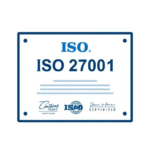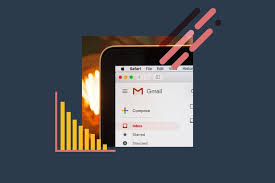Email marketing continues to be one of the most effective tools for eCommerce businesses. It’s cost-efficient, highly measurable, and drives conversions across every stage of the buyer journey. But the real magic happens when you move from one-off campaigns to automated email flows.
In this guide, we’ll break down the key email flows every online store should have, what makes them work, and how partnering with an experienced eCommerce service provider can take your automation strategy to the next level.
Why Email Marketing Matters in eCommerce
Even with the rise of social media and paid ads, email marketing consistently delivers one of the highest ROIs—some reports showing up to $42 for every $1 spent.
Here’s why it’s powerful:
You own the audience (no algorithms deciding who sees your message).
It builds trust and long-term relationships.
You can segment and personalize messaging at scale.
It supports retargeting, retention, and loyalty.
Now, let’s dive into the must-have automated flows.
1. Welcome Flow: Make a Powerful First Impression
Purpose: Introduce your brand, set expectations, and start building trust.
When it’s triggered: When someone subscribes to your email list (usually through a pop-up, signup form, or checkout opt-in).
What to include:
Thank-you message and brand story
Any promised discount or incentive
Product highlights or categories
Social proof (testimonials, reviews)
CTA to browse your bestsellers
Pro tip: Don’t cram everything into one email. Spread the content over 3–4 emails across 3–5 days.
2. Abandoned Cart Flow: Recover Lost Revenue
Purpose: Remind customers about what they left behind and encourage them to complete the purchase.
When it’s triggered: A shopper adds a product to their cart but leaves the site without checking out.
Key elements:
Product image and description
Reminder of the item in the cart
Incentives like a small discount or free shipping
Urgency triggers (“Your cart will expire soon!”)
Timing is everything. A good structure is:
Email 1: Sent within 1 hour
Email 2: After 12–24 hours
Email 3: After 48 hours with added incentive
3. Post-Purchase Flow: Turn Buyers into Repeat Customers
Purpose: Thank the customer, build trust, and encourage a second purchase.
When it’s triggered: After a customer completes an order.
What to include:
Order confirmation and shipping info
Product care tips or user guides
Review request
Cross-sell recommendations
Loyalty program invitation (if applicable)
People are most engaged right after buying. Use this moment to create a memorable brand experience.
4. Win-Back Flow: Re-Engage Lapsed Customers
Purpose: Bring back customers who haven’t shopped in a while.
When it’s triggered: Typically after 60–90 days of inactivity.
Content ideas:
“We miss you” messaging
Personalized product recommendations
Limited-time offer or discount
Highlight of what’s new in your store
You don’t need to go aggressive on the first email. Let the re-engagement feel natural and timely.
5. Browse Abandonment Flow: Nurture Warm Leads
Purpose: Remind shoppers of products they viewed but didn’t add to their cart.
When it’s triggered: A visitor browses products without taking any further action.
What to send:
Eye-catching product images
Short benefit-driven copy
Related product suggestions
Social proof or testimonials
This flow captures visitors earlier in the buying process than cart abandoners and helps guide them forward.
6. Birthday or Anniversary Flow: Add a Personal Touch
Purpose: Celebrate your customer and strengthen loyalty.
When it’s triggered: On their birthday, signup anniversary, or first purchase date.
Suggestions:
A personalized greeting
Special discount or freebie
Exclusive VIP offer
It’s a small gesture that goes a long way in humanizing your brand and keeping your store top of mind.
7. Product Review Flow: Build Social Proof Automatically
Purpose: Gather reviews that build trust for future buyers.
When it’s triggered: A set number of days after delivery.
What to include:
Clear review CTA with one-click access
Incentive (optional)
Images of the purchased item
Message of appreciation
More reviews = more confidence for new customers = more sales.
Best Practices for Email Automation
To make your automated flows effective, follow these tips:
Segment your audience: Don’t send the same email to everyone. Use behavior, preferences, and purchase history.
Use engaging subject lines: They determine whether your email is opened.
Test and optimize: A/B test subject lines, CTAs, email timing, and layouts.
Stay compliant: Always include an unsubscribe link and follow GDPR/ CAN-SPAM rules.
Keep branding consistent: Use your logo, colors, and voice across all emails.
Tools You Can Use
Some powerful platforms to build automated flows include:
Klaviyo – Excellent for Shopify stores
Mailchimp – Good for beginners and basic automation
Omnisend – Designed for eCommerce with SMS integration
ActiveCampaign – Great for complex workflows and segmentation
Most of these tools integrate easily with major eCommerce platforms like WooCommerce, Shopify, and Magento.
Need Help Setting Up Automated Flows?
Creating email flows is not just about setting triggers—it’s about strategy, creative writing, design, testing, and understanding customer behavior.
That’s why working with a professional eCommerce service provider can be a smart investment. Whether you need help choosing the right tools, designing templates, or crafting high-converting copy, an expert team can help you set up automation that boosts revenue consistently.
Final Words
Automated email flows are not just convenient—they’re critical for building relationships and generating repeat sales in your eCommerce business. From recovering abandoned carts to reactivating silent customers, each flow serves a purpose in your larger sales machine.
If you haven’t yet built out these flows, start with one and expand. The sooner you automate, the sooner you can grow—on autopilot.
- Email Marketing for eCommerce: Automated Flows
- Even with the rise of social media and paid ads, email marketing consistently delivers one of the highest ROIs—some reports showing up to $42 for every $1 spent.
- eCommerce
Related posts:
 Discover the Best Full Body Massage Experience in Lancaster, PA with Focused Care Therapeutic Massage
Discover the Best Full Body Massage Experience in Lancaster, PA with Focused Care Therapeutic Massage
 ISO 27001 Training: A Real-World Lifeline to Reduce the Risk of Data Breaches
ISO 27001 Training: A Real-World Lifeline to Reduce the Risk of Data Breaches
 How Instagram Stories Help Businesses: A 2025 gerat Guide ..
How Instagram Stories Help Businesses: A 2025 gerat Guide ..
 “GV GALLERY® || TheGv Gallery Shop || Official Clothing Store “
“GV GALLERY® || TheGv Gallery Shop || Official Clothing Store “
 Don’t Miss Out on today’s Best Sale Offer with Huge Discounts!
Don’t Miss Out on today’s Best Sale Offer with Huge Discounts!
 Why Smart Entrepreneurs Trust a Certified Tax and Business Advisor Over DIY Tax Tools
Why Smart Entrepreneurs Trust a Certified Tax and Business Advisor Over DIY Tax Tools
 Web Design Agency Netherlands: Elevate Your Online Presence with Creative Excellence
Web Design Agency Netherlands: Elevate Your Online Presence with Creative Excellence
 Modern Flexible Office Pods for Stylish, Productive Workspaces
Modern Flexible Office Pods for Stylish, Productive Workspaces






